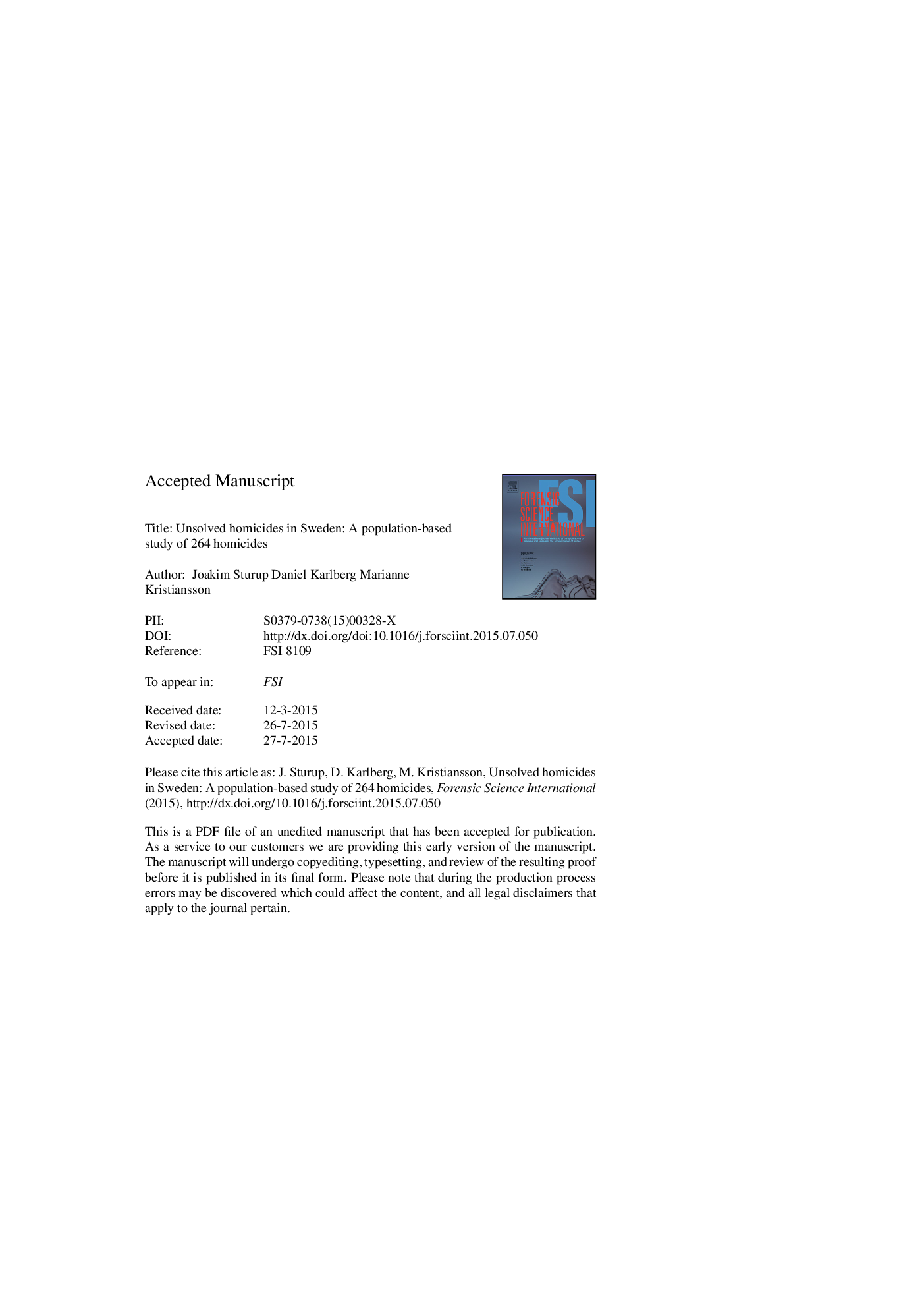| Article ID | Journal | Published Year | Pages | File Type |
|---|---|---|---|---|
| 6551943 | Forensic Science International | 2015 | 32 Pages |
Abstract
The clearance rates for homicides have decreased internationally. This retrospective population-based study of all Swedish homicide incidents between 2007 and 2009 (n = 264) aims to investigate factors associated with solvability in homicides. Victims were identified in an autopsy registry and offenders in a criminal-conviction registry. Autopsy reports, police files, court verdicts and criminal records were systematically collected and linked. The clearance rate was 86.4% (n = 228), and almost three quarters of cases (71.9%) were solved within the first week. Nine factors were significantly associated with the case status; however, only four factors remained significant in the multivariate logistic-regression model. Cases were more likely to be solved if there was an eyewitness and if the victim was intoxicated with alcohol. Moreover, cases were less likely to be solved if the victim had a criminal record in the past five years and was killed by a firearm. In the final model, a Cox proportional-hazards model, where time to arrest was taken into account, only alcohol intoxication were positively and firearms negatively significantly associated with clearance status. The study concludes that cases involving these factors should be granted extra, intensive and lasting resources.
Keywords
Related Topics
Physical Sciences and Engineering
Chemistry
Analytical Chemistry
Authors
Joakim Sturup, Daniel Karlberg, Marianne Kristiansson,
